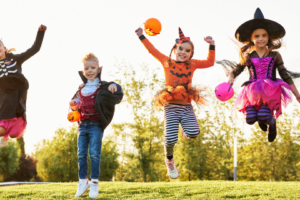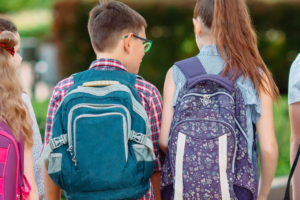
The holiday season is a time to be thankful and appreciative of the good things in our lives. For parents of young children, it’s also an ideal time to introduce some teachable moments that help kids understand the true importance of the season.
“The outcome of this effort is for children to become aware that giving to others exceeds the satisfaction of receiving,” says Ankur Desai, MD, a board-certified child and adolescent psychiatrist on staff at CentraState Medical Center in Freehold.
“Instilling morals and ethics in our children is a learned behavior that evolves and develops at the same time as intellectual growth. Often, adults can teach these lessons by using real-life experiences as examples,” he adds.
Dr. Desai outlined the three stages of moral development in children.
Children under nine: In this age group, the concept of “right or wrong” is a learned behavior designed to avoid punishment and negative consequences set by authority figures, such as parents and teachers.
Pre-adolescents: Beginning around the pre-adolescent age of nine or ten, children realize the world is not exclusively about them and that people around them also have their own wants and needs.
“This age is a great time to introduce a child to someone disadvantaged in some way and challenge them to offer help without expecting a reward or payback,” says Desai. The lesson is that their behaviors can positively or negatively impact others.
As they continue to develop intellectually and form their beliefs and convictions, a child starts to understand they can make choices to help others because it is in line with what society defines as “good behavior” or “socially desirable behavior.”
Adolescents and beyond: The third stage of moral development, which evolves through adolescence and into adulthood, involves crystallizing the youth’s own personal beliefs and convictions. This development may or may not align with society’s definition of “good behavior.” Still, it applies the principle of improving people’s lives globally, otherwise known as universal principles that impact humanity. At this stage, there is the enlightenment that their sacrifice to help others or improve the quality of other people’s lives is a reward.
Dr. Desai said families can try the following exercises to help children learn and appreciate these life lessons:
-
Read aloud books and other content that address the value of gratitude.
Your voice and text convey important ideas, feelings, and values, especially for younger children. The physical experience of reading morality stories together can add to the child’s personal life experience and help establish the concept of gratitude in children.
-
Help a child learn about gift-giving.
Include children in the gift-giving process from start to finish so they can understand the effort and care that goes into making or purchasing a present for someone. Allow them to experience the simple joy of making others happy by giving a token of love and affection.
-
Get the whole family involved in a cause to help those less fortunate.
Children of all ages have a great capacity for remembering experiences. Even younger kids can be part of a family effort to assist others or make something better. The activity allows them to ask questions and be thankful for their good fortune.
-
Before bed, talk about what you were grateful for today.
It’s a simple question, but the response you may hear from children of all ages can be profound and telling. If younger children aren’t sure how to respond, start by offering a simple example of your own.
“Making a personal sacrifice to make the world a better place is part of becoming a valuable member of society,” says Dr. Desai. “Morally, as parents and caregivers, one of the goals for our children is to teach them empathy and the satisfaction of sacrificing to help the greater good. Indeed, we all like to receive presents and share in the holidays’ festivities, but it’s also an ideal time to help children understand the true and precious gift of giving.”





